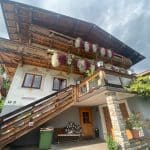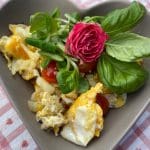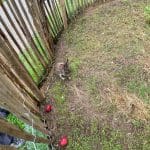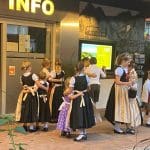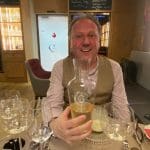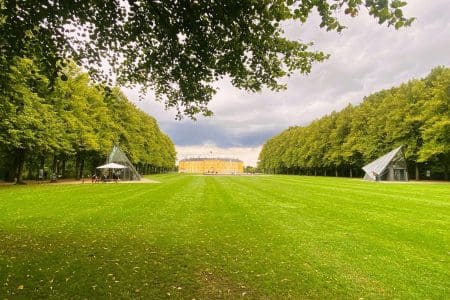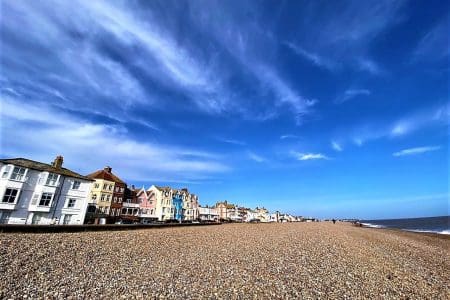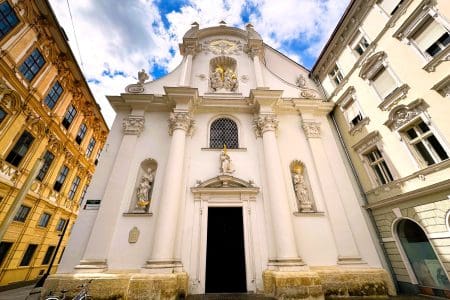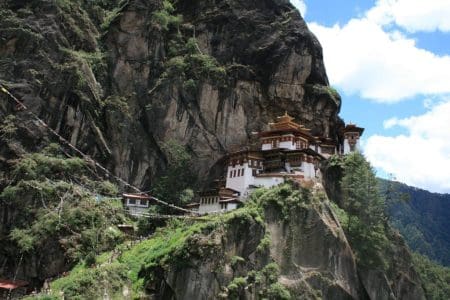Mark Bibby Jackson travels to the Wilder Kaiser in Austria where he detects a very local approach to sustainable tourism.
As I arrive in the Wilder Kaiser I notice the snow high up on the mountains. This is September and the highest peak, the Ellmauer Halt, is only just over 2,340 metres. Surely the snow can not have survived the hot summer? Then I recall the cold snap I had endured on my visit to Vienna over the weekend and it all becomes clear. It has just snowed – in September. Is this yet more proof of our changing climate?
A Carbon Free Future
Certainly, Lukas Krösslhuber, the Head of Tourism in the Wilder Kaiser region, needs no need of persuading to the reality of climate change, and in particular of the part that transport plays in global heating.
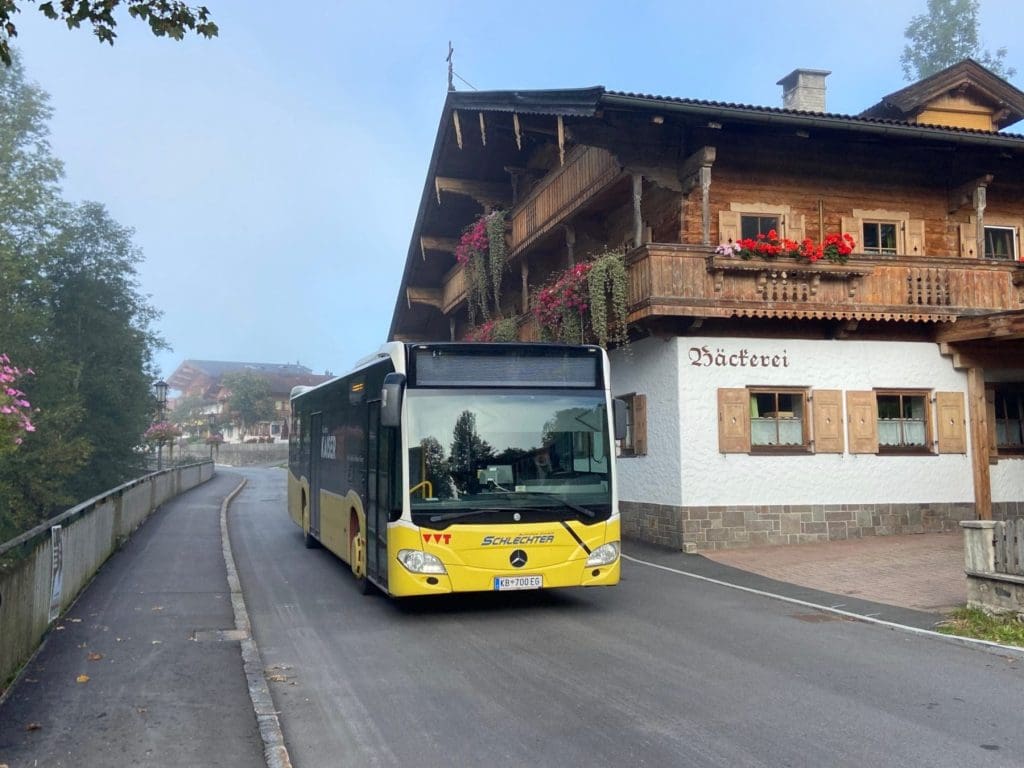
“I would prefer less cars,” he tells me over lunch. One of his pet projects is the Kaiser Jet, a bus service that runs around the four towns in the Wilder Kaiser – Söll, Scheffau, Ellmau and Going. It has won a climate award in Tyrol and has been nominated for a similar award for Austria.
It is part of the region’s strategy to reduce the carbon footprint created by tourism. Upon checking in at my hotel the previous evening, I received my Wilder Kaiser card that allows me free travel on the Jet. Guests are also offered a free shuttle from the hotel to the train station in Kufstein. In winter there are ski busses.
The plan is to extend the service beyond the four towns, and to provide one integrated transportation service for both tourists and locals. There is also a network of bike routes and hiking trails.
“The aim is to try to organise tourism in a way that is good for people in the local area,” says Lukas. Part of the strategy is to “grow in quality and not in numbers”. He wants to attract more guests in shoulder seasons, so the industry is less reliant upon the high season, and the benefits of tourism are spread more evenly.
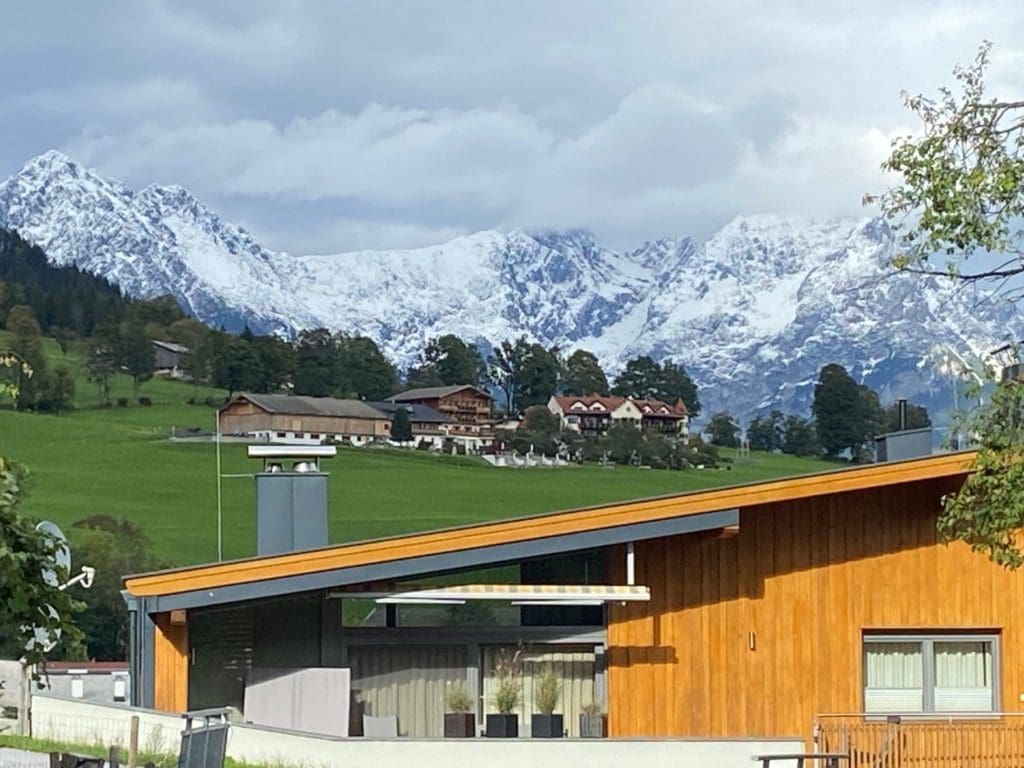
As such they do not want to build any new hotels, but instead encourage people to stay in private apartments, which the tourism department is helping to upgrade as well as to check standards are maintained. Lukas believes this will help both to increase tourism revenue and to encourage tourists to stay locally.
The Local Bath-house
I already experienced the local approach at the Hotel-Gasthof Badhaus where I was staying and also dined on my first night.
This was possibly the most local meal I have experienced. The trout was caught earlier that day from the pond in the hotel’s grounds. The raspberries were their own raspberries, the apple sorbet was home made from their own apples. And perhaps most importantly the schnapps was a 1992 vintage created by the grandfather of the current owners. It was easily the smoothest schnapps I have tasted.
The Badhaus – literally bath house – has been in the family for some 600 years. People used to come here for the healthy waters, like a medieval spa – hence the bad haus. The family used to entertain guests even back then.
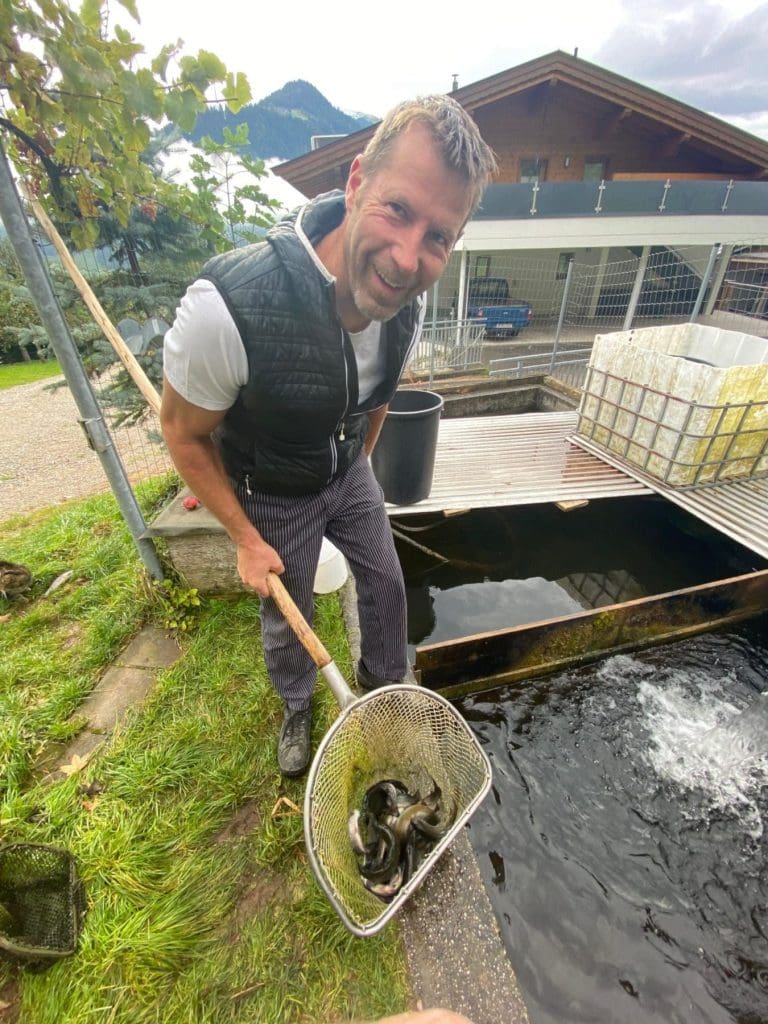
In the morning, after an incredible breakfast with quail eggs laid by – you’ve guessed it – their own quails, and homemade jam, the owner Hans Kuechl showed me around their four hectares of land and small organic farm.
In addition to the 30 or 40 fruit trees and vegetable garden, there are 17 chickens, a couple of sheep and cattle. There are also 1,000 fish – well, possibly 999 – trout and char. Johann catches these with a net rather than a hook to minimise their pain. The rabbits are just for kids to play with. The family also goes foraging for mushrooms in the forest directly to the rear of the hotel.
Chatting to Hans I realise that this is no ‘greenwash’, but a sustainable family-run enterprise at one with nature. Currently the water is heated by solar panels and wood is used for the heating, although they have plans to introduce photovoltaic panels soon, to go even further off-grid.
Keeping It Local
It is not just at my hotel that things are kept local, although with a distinctly Tyrolean twist. Before visiting Söll I had never conceived of a nomadic chicken ranch, yet alone seen one. But in the fields on the outside of the town a chicken farm glides across the fields, the foul protected from foxes by two guide goats. I feel Monty Python could have had a field day here.
No doubt the eggs are available at the village larder, or Hofladen, in Keilhof – a small shack on the side of the road where locals buy milk, eggs, pasta, cheese and noodles on an honesty system.
It is here that I meet Katalina and her 15-month-old daughter Lily May (main photo).
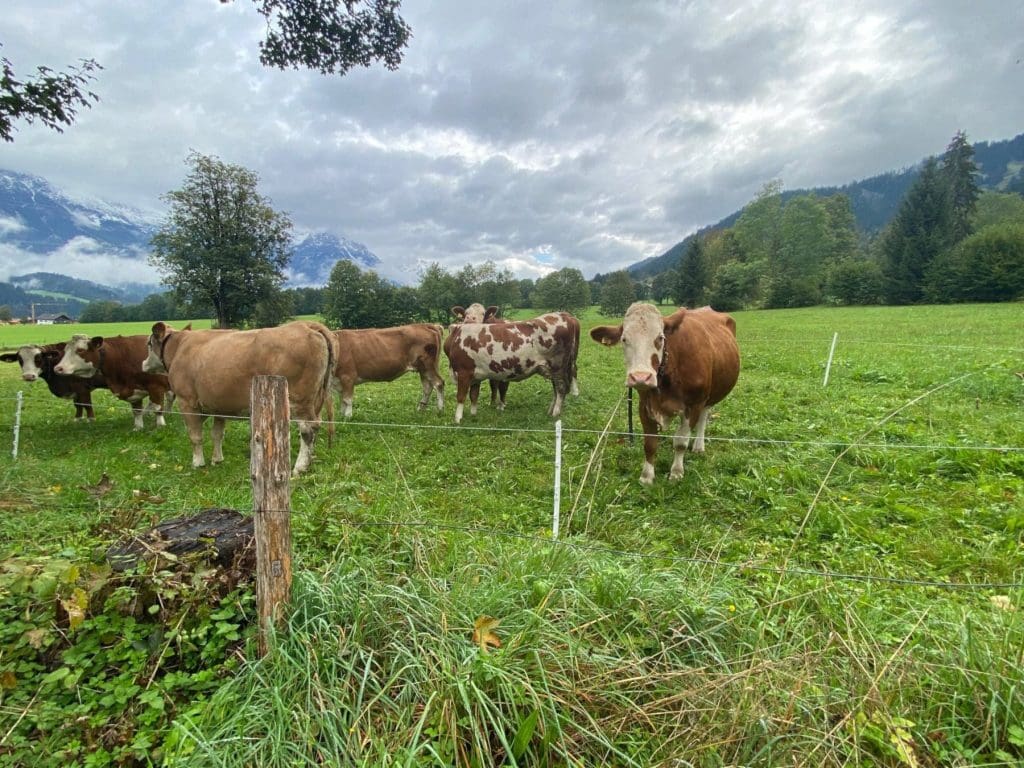
“Everything is really good,” Katalina informs me. “The noodles taste far better than in the supermarket.”
Katalina is clearly not alone in her views. While we are chatting three separate customers come to the shop.
Another Hofladen is just next door, it belongs to Franz, a farmer who raises sheep in the field adjoining the nomadic chicken ranch. He sells his sheep cheese here.
The idea behind the scheme – there is another Hofladen just down the road – is to demonstrate to people where they can buy fresh produce.
Katalina comes here all the time. “They are our friends and we are happy to support them,” she says.
Dining in Riedl Luxury
At the opposite end of the local scale to Franz’s larder is the Riedl Room at Greil Hotel in Söll.
Riedl creates some of the finest wine glasses in the world. It is based in Kufstein which is where my train had arrived the previous day.
Owner Sepp Greil informs me the idea to establish the Riedl Room at his family hotel – he is the third generation, so a relative newcomer compared to Johann – came from Maximilian Riedl.
“His idea and my money,” laughs Sepp over a welcoming glass of champagne in his unique room – the only one in Europe, where they have ‘glass tastings’.
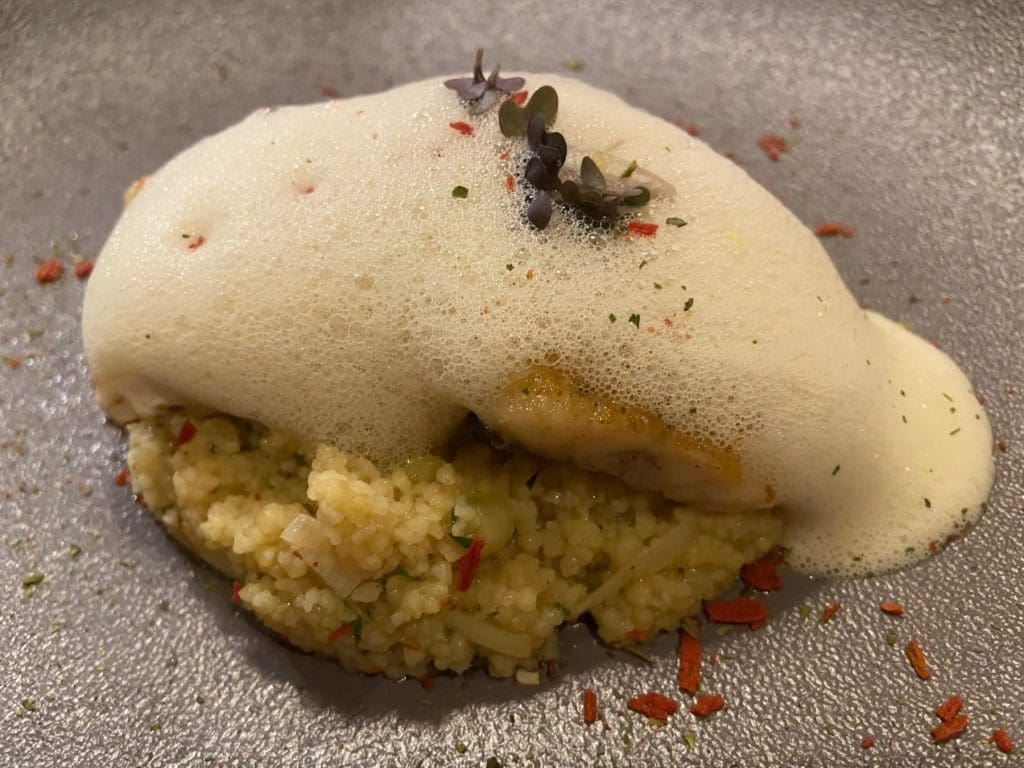
The concept behind the tastings is to demonstrate how the right glass can bring out the full potential of the wine. To demonstrate this Sepp pours some Riesling wine both in the ‘right’ glass and also a ‘wrong’ one, without telling us which is which. The difference is clear even to an inexpert nose such as mine. Riesling is a fruity wine, and the proper Riesling glass really does bring out its aromas better than the other glass – which is also made by Riedl.
We are also treated to some food from the hotel’s kitchen to accompany the tasting. To start we have a beetroot carpaccio served with an excellent feta and walnut. This is followed by a cucumber thyme soup that comes with a glass of chardonnay. Once more the difference between glasses is marked. With the Montrachet glass you really can detect the oakiness in the wine.
“Chardonnay has a bad reputation because it is drunk from the wrong glass,” Sepp says.
Our meal continues with an excellent Tyrolean ravioli in butter with tomato and rocket, and then a sea bass served with leak, which was my favourite dish.
By now we have moved onto the red wines, including a wonderful pinot noir which rounds off a most illuminating day perfectly.
Breakfast in the Mountains
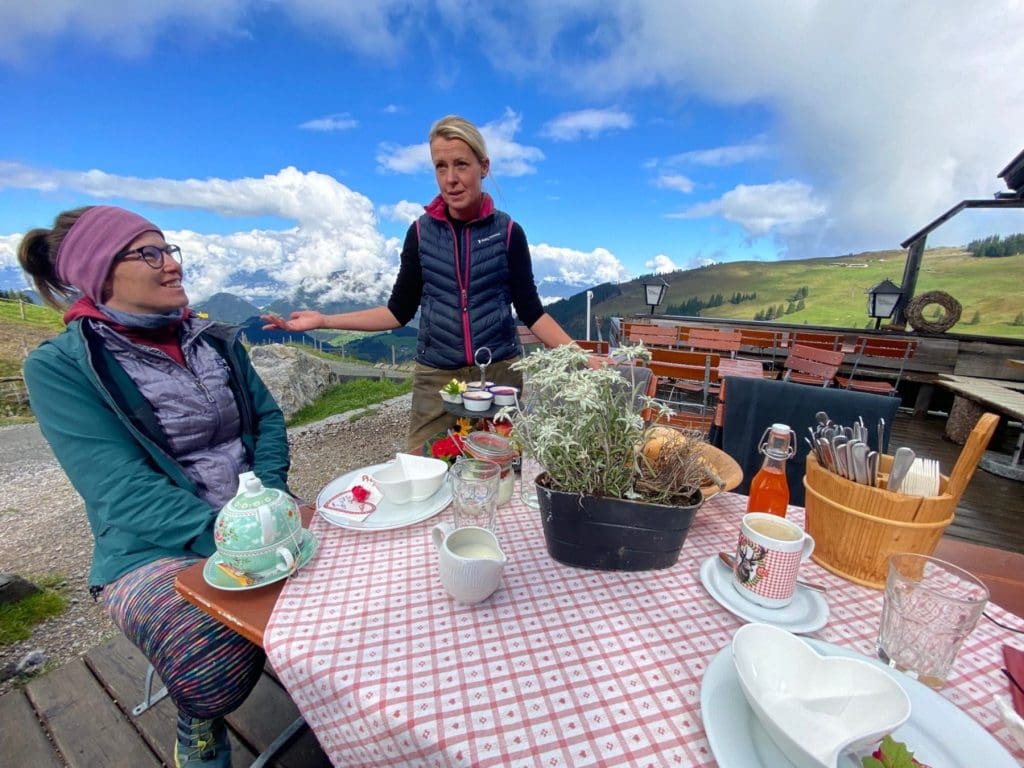
The following morning we take the gondola up to Brandstadl, which is at 1,650 metres.
After a short and easy hike we reached the Au Hoch-Alm mountain hut to have breakfast – well more brunch with Johanna and Georg Horngacher.
The hut is 400 years old and has always been in Georg’s family, although it has only been open for guests for seven summers. It has quite mesmerising views across the valley.
There is something quite divine about sampling homemade yoghurt with the sound of cow bells jingling in the background. The cheese comes from their own cows and the pickles and jams are also homemade. Perhaps you are detecting a recurring theme?
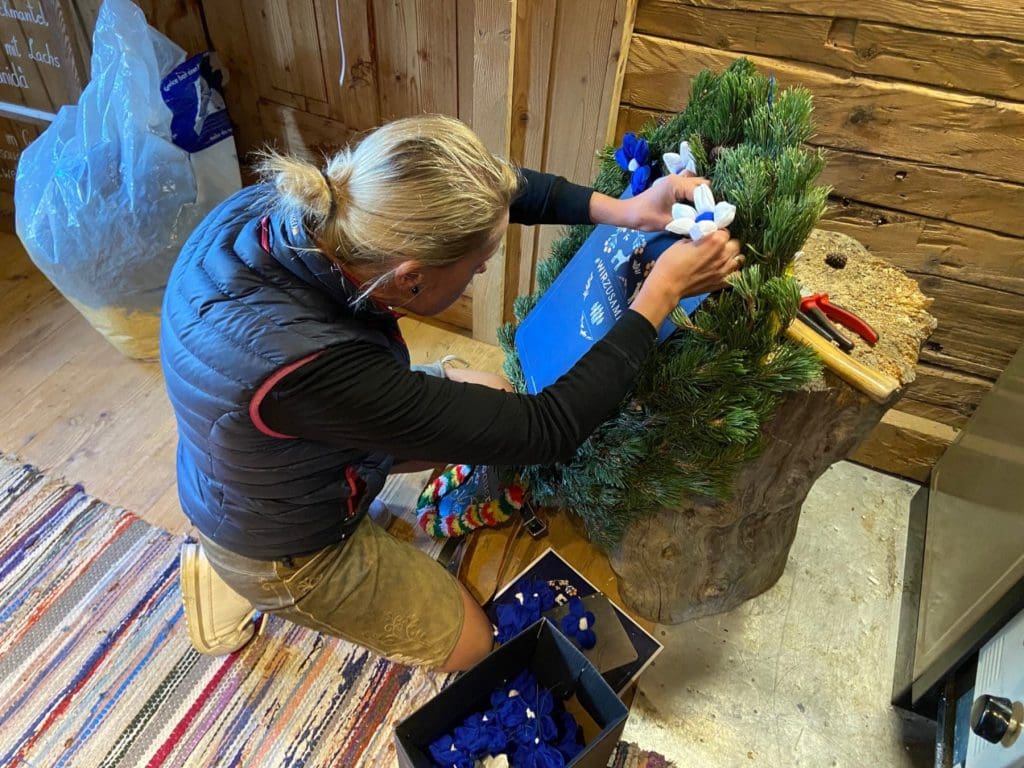
While not preparing our breakfast, Johanna is busy making decorations for the annual Hoamfohrn, which will take place on the following Saturday. Local famers parade their cows down the mountains into the lower valleys where they will feed during the winter. Apparently a spectacular sight, it is a pity I missed it.
The Kaiserschaft
Sometimes when people think of sustainable tourism they automatically assume it is to do with conserving nature. However, social sustainability by which we ensure the benefits of tourism reach the host community is arguably equally important.
That afternoon I meet Katie Tropper for coffee. She is running the Kaiserschaft scheme which consists of 16 hotels, bars and restaurants that have signed a charter pledging their commitment to ensuring employees receive a good salary, reasonable working hours, and are given the opportunity to take on greater responsibility.
In recent years the tourism industry has come in for some criticism not just for its negative environmental and climate impact, but also for exploitative practises towards staff – although tourism is by no means alone in this. Many of the people who used to work in tourism in the Wilder Kaiser have left; a trend not unique to the region, and exacerbated by Covid.

Katie believes that employers should take responsibility for shaping the direction of tourism in the region. This requires leadership.
“New leaders know we need change and they want to implement that,” she says. “We are working together for the future.” Katie also works with schools, even at primary level, to try to shift the image of the sector. “It’s really important to change the perspective of tourism,” she says.
The model for a sustainable tourism sector should be totally inclusive and reflect the three Ps of people and the planet, not just profit.
“You have to think a little bit out of the box,” she says, adding that tourism needs a purpose that is beyond just making a profit, which she sees as an output. “If you think in a different way then tourism has a new energy.”
Mountain Snails and Gin
By now I have really got into the feel of this part of the Austrian Tyrol where everything seems to be local and mostly family-run – and with a clear, social purpose, although not necessarily steeped in tradition.
After coffee with Katie, I visit a snail farm started by Simone Embacher in 2019.
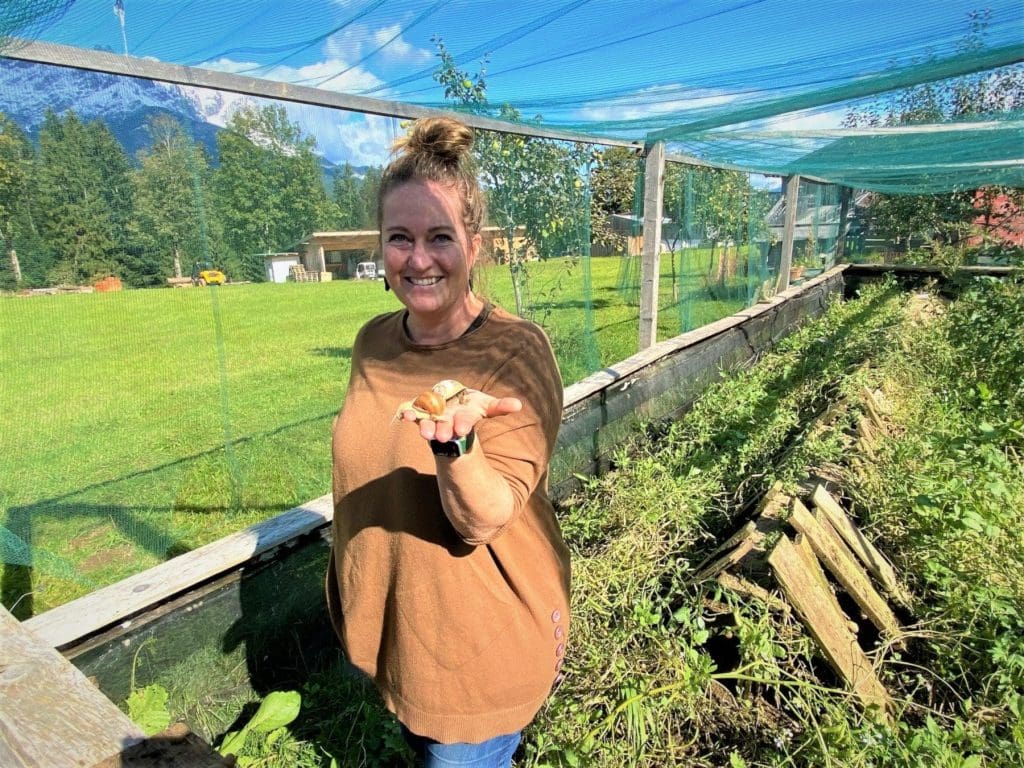
This really is slow food. Simone has 50,000 snails which she feeds on leftovers from supermarkets, before killing humanely in their sleep. Simone sells her l’escargots to some 25 to 30 local restaurants local. They are full of protein. Even, if you don’t want to taste Simone’s superfood, you can enjoy the farm’s idyllic setting and perhaps try a gin at the adjoining distillery.
Austria is more renowned for its schnapps than gin. Simon Koller has been distilling for 50 years, although his farmhouse goes back to the time of Columbus having been built in 1492. Simon allows me to taste some of his Koller’s cherry schnapps as well as a Söll brand schnapps. Then he shows me the tasting sales room in the basement of his ancient farmhouse, with a door that opens upwards as if you are about to enter Q’s room in 007 – although nothing here was either shaken nor stirred.
For my final evening in the Wilder Kaiser, I am invited to Söll market, which takes place every Wednesday from June to September. It is all very welcoming. Children perform traditional dance encouraged by their adults who stay warm drinking glühwein. It’s at this point that it dawns upon me that I haven’t heard anyone speaking English during my brief visit – except when addressing me. Such a relief.
The Wilder Kaiser offers a wonderful local and traditional form of tourism. At a recent press conference for Greek tourism I was told that “we have been doing sustainable tourism for ages, it’s just we haven’t called it that”. The same is surely true for the Wilder Kaiser.
Led by Lukas Krösslhuber and inspired by Katie Tropper, the Wilder Kaiser really is showing the way towards a sustainable and climate sensitive approach to tourism that really does deserve our support. It’s also a wonderful place to relax and just take your time. Be a tortoise not a hare – but perhaps not a snail.
Other Things To Do in the Wilder Kaiser
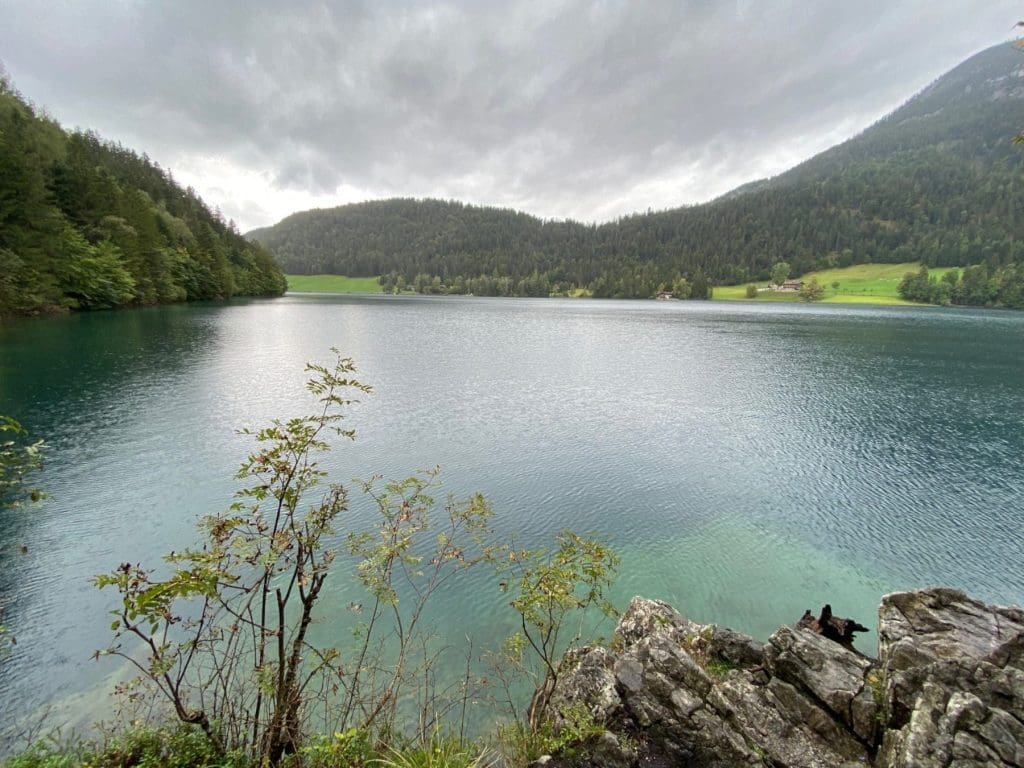
With some 40 peaks in its protected mountain range, the Wilder Kaiser affords great hiking and biking opportunities. One of the most pleasant and relatively comfortable walks is around the Hintersteiner See. The lake has a lovely turquoise colour. It takes an hour and a half to walk the 5km around it. You can get there by bus.
Wilder Kaiser Photo Gallery
More Information About the Wilder Kaiser
If you want more ideas on the sustainable things you can do in the Wilder Kaiser, visit the local tourism site.
All photos Mark Bibby Jackson.
